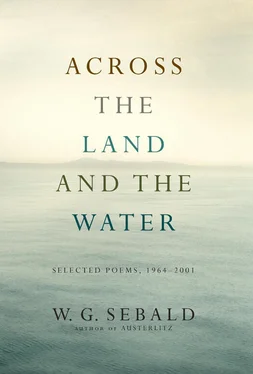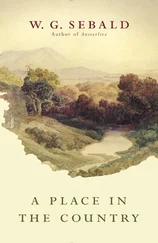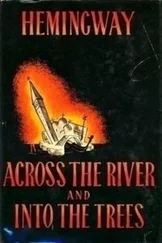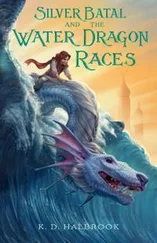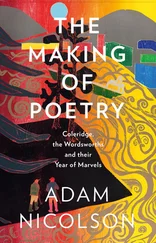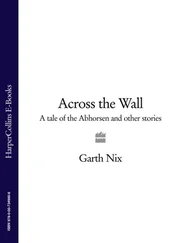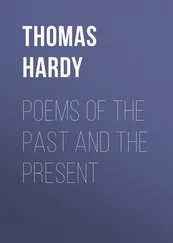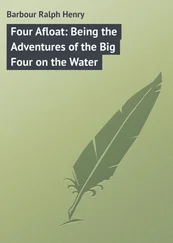Appendix: Two poems written in English by W. G. Sebald
the day in
the year after
the fall of the
Soviet Empire
I shared a cabin
on the ferry
to the Hoek
of Holland with
a lorry driver
from Wolverhampton.
He & twenty
others were
taking super —
annuated trucks
to Russia but
other than that
he had no idea
where they were
heading. The gaffer
was in control &
anyway it was
an adventure
good money & all
the driver said
smoking a Golden
Holborn in the upper
bunk before
going to sleep.
I can still hear
him softly snoring
through the night,
see him at dawn
climb down the
ladder: big gut
black underpants,
put on his sweat —
shirt, baseball
hat, get into
jeans & trainers,
zip up his
plastic holdall,
rub his stubbled
face with both his
hands ready
for the journey.
I’ll have a
wash in Russia
he said. I
wished him the
best of British. He
replied been good
to meet you Max.
From the flyover
that leads down
to the Holland
Tunnel I saw
the red disk
of the sun
rising over the
promised city.
By the early
afternoon the
thermometer
reached eighty —
five & a steel
blue haze
hung about the
shimmering towers
whilst at the White
House Conference
on Climate the
President listened
to experts talking
about converting
green algae into
clean fuel & I lay
in my darkened
hotel room near
Gramercy Park
dreaming through
the roar of Manhattan
of a great river
rushing into
a cataract.
In the evening
at a reception
I stood by an open
French window
& pitied the
crippled tree
that grew in a
tub in the yard.
Practically defoliated
it was
of an uncertain
species, its trunk
& its branches
wound round with
strings of tiny
electric bulbs.
A young woman
came up to me
& said that although
on vacation
she had spent
all day at
the office
which unlike
her apartment was
air-conditioned &
as cold as the
morgue. There,
she said, I am
happy like an
opened up oyster
on a bed of ice.
The notes that follow cannot be comprehensive, nor do they propose to “explain” the poems or disclose their secrets. Their purpose is twofold: to show the textual sources on which the present volume draws and to throw light on some of Sebald’s allusions to landscapes, works of art or literature, and other matters of historical interest. Points of reference and connotation inevitably inform a translator’s decisions as he goes about the business of rebuilding a poem in a different language. Even after considerable research, however, many details have remained obscure. Readers better acquainted than I am with the life and work of W. G. Sebald will recognize echoes, overtones, and contexts that I have overlooked.
In indicating the source of a poem, the following abbreviations will apply: FSZ( Freiburger Studentenzeitung ); ZET( Das Zeichenheft für Literatur und Grafik ); PT(Collection “Poemtrees. Lyrisches Lesebuch für Fortgeschrittene und Zurückgebliebene,” Folders 1 & 2, in The Papers of W. G. Sebald, Deutsches Literaturarchiv, Marbach); H(Hanser Verlag volume Über das Land und das Wasser , ed. Sven Meyer: 2008); SL(Folder 1: “Schullatein,” in collection “Über das Land und das Wasser,” in The Papers of W. G. Sebald, Deutsches Literaturarchiv, Marbach); ÜLW(Folder 2: “Über das Land und das Wasser,” in collection “Über das Land und das Wasser,” in The Papers of W. G. Sebald, Deutsches Literaturarchiv, Marbach); VVJ(Folder 3: “Das vorvergange Jahr,” in collection “Über das Land und das Wasser,” in The Papers of W. G. Sebald, Deutsches Literaturarchiv, Marbach); GG1(File “Gedichte und Gedichtentwürfe,” Folder 1, in The Papers of W. G. Sebald, Deutsches Literaturarchiv, Marbach); DK(Der Komet. Almanach der Anderen Bibliothek auf das Jahr 1991 , Frankfurt am Main: 1991); WS( Weltwoche Supplement: Juni 1996); JPT(Jan Peter Tripp, Die Aufzählung der Schwierigkeiten: Arbeiten von 1985–92 , Offenburg, 1993); FL(Franz Loquai, W. G. Sebald , Eggingen, 1997); NZZ( Neue Zürcher Zeitung , Nr 256, 13 November 1999); AK48( Akzente 48 J., 2001 ); AK50( Akzente 50 J., 2003); K&C( Konterbande und Camouflage. Szenen aus der Vor- und Nachgeschichte von Heinrich Heines marranischer Schreibweise . Berlin, 2002); P( Pretext , vol. 2: Autumn 2000); FYN(Collection “For Years Now,” in The Papers of W. G. Sebald, Deutsches Literaturarchiv, Marbach).
1 “For how hard it is”PT, FSZ 14 (1964), H.
2 “A colony of allotments”PT, FSZ 14 (1964), H.
3 “Smoke will stir”PT, FSZ 14 (1964), H.
4 “The intention is sealed”FSZ 14 (1964), H.
5 NymphenburgPT, FSZ 14 (1964), H. Title: the gardens and interiors of the Baroque Nymphenburg Palace, formerly the summer residence of Bavaria’s ruling Wittelsbach dynasty, are among Munich’s most frequently visited attractions. mauves: French for “mallows.” Wishing Table: the poem invokes the Brothers Grimm’s tales “Dornröschen” (“Sleeping Beauty,” or “Briar Rose”) and “Tischchen deck dich, Goldesel und Knüppel aus dem Sack” (“The Wishing Table, the Gold Ass and the Cudgel in the Sack”), in which a table, on command, sets and spreads its own surface with food and drink.
6 EpitaphFSZ 15 (1965), H.
7 Schattwald in TyrolPT, FSZ 15 (1965), H. Title: Tyrolean village to the east of Oberjoch, from which the narrator of the final section (“Il ritorno in patria”) of Sebald’s Schwindel. Gefühle (1990; Eng. trans. Vertigo , 1999) walks to Wertach, the author’s place of birth. Rosetta stone: an ancient Egyptian stele of black granodiorite, inscribed with the so-called Memphis decree, issued in three languages in 196 BCE. Its discovery contributed to the decipherment of Egyptian hieroglyphics. In an earlier version of the poem, the second stanza reads: “Am Anfang der Legende / brachte die Botschaft / der Engel des Herrn / ins Haus aus Schatten” (At the beginning of the legend / the Angel of the Lord / brought the tidings / to the House of Shadows”).
8 Remembered Triptych of a Journey from BrusselsPT, FSZ 15 (1965), H. near Meran in Ezra’s hanging garden: from 1958, after his release from St. Elizabeths Hospital in Washington, D.C., Ezra Pound stayed at Castle Brunnenburg near Meran in northern Italy, the home of his daughter Mary de Rachewiltz. battlefield at Waterloo: Sebald’s narrator describes visits to Waterloo in the passage entitled (in the contents) “The Panorama of Waterloo,” in the fifth chapter of The Rings of Saturn , including a visit in December 1964, when he stayed at a hotel near the Bois de la Cambre and visited a bar in Rhode St. Genèse. Marie-Louises: young soldiers of the Napoleonic army in 1814, many of them between fourteen and fifteen years old, who had been conscripted during the regency of Empress Marie-Louise, Napoleon’s wife, during her husband’s absence for the German campaign of 1813–14. ferme in Genappe: the farmhouse was Napoleon’s headquarters on the night of June 17, 1815, the eve of the Battle of Waterloo. Marquise of O.: the reference to the eponymous protagonist of Heinrich von Kleist’s story is obscure, but see note on Light in August below. A woman’s mouth … roses: in English in the German text. Départ … Milan via St. Gotthard: the train for Milan via St. Gotthard departs from platform 8 at 00.16 hours. industrie chimique: chemical industry. light above the heavenly vaults: in English in the German text. Bahnhof von Metz: Metz train station. bien éclairée: well illuminated. Gregorius, the guote sündaere (Gregorius, the good sinner): a medieval verse epic by Hartmann von der Aue (died ca. 1210). Au near Freiburg: one of the municipalities of that name which claim association with the poet. rechtsrheinisch: on the right (eastern) side of the Rhine. Froben & Company: the humanist Johann Froben (1460–1527), a friend of Erasmus of Rotterdam, set up a successful printing business in Basel in 1491. Light in August: title of a novel (1932) by William Faulkner (1897–1962). One of the characters is Lena Grove, who, like the pregnant Marquise of O. in Heinrich von Kleist’s story, mentioned earlier in the poem, is trying to find the father of her unborn child. To do so, she walks a long distance to Jefferson, in Yoknapatawpha , the fictional setting of several of Faulkner’s novels.
Читать дальше
